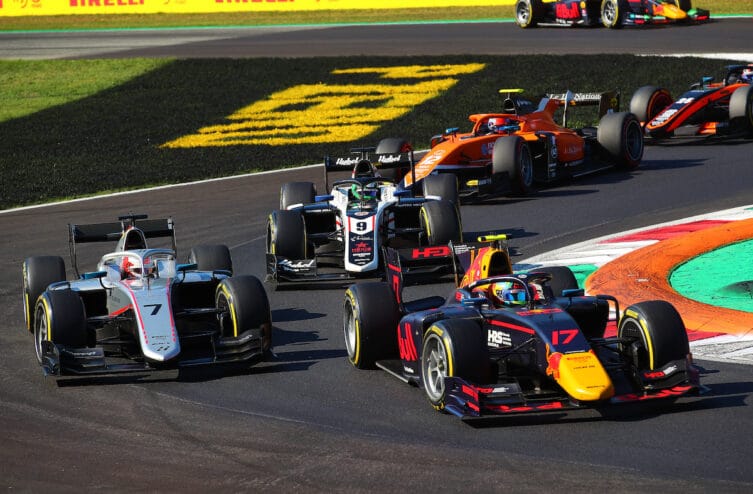Green Light Europe: F1's Bold Eco-Shift for a Sustainable Racing Future
This isn't just a symbolic gesture. Back in 2023, the use of this sustainable fuel in the DHL freight trucks resulted in a remarkable 83% reduction in logistics-related emissions. Imagine the cumulative impact across the densely packed European calendar!

As the roar of Formula 1 engines prepares to echo across the iconic circuits of Europe, a quieter revolution is taking place behind the scenes. Forget just the thrill of speed; the 2025 European leg marks a significant gear change for Formula 1 as it accelerates its journey towards Net Zero by 2030 with a comprehensive Alternative Fuel Strategy (AFS). Get ready to witness a greener Grand Prix season, powered by innovation and a commitment to a sustainable future.
For years, the feeder series, Formula 2 and Formula 3, have been quietly leading the charge, their engines fueled by a blend of synthetic and traditional fuels. These aren't fossil fuels of old; they're meticulously crafted from sustainable sources like forestry and agricultural waste, used cooking oil, capture carbon, and green hydrogen. The beauty? They're designed to emit only the carbon that was originally drawn from the atmosphere during their production, creating a closed-loop (or net zero) system.

This year, the sustainability push goes into overdrive for the European races. Formula 1 is deploying its AFS with a two-pronged attack:
Sustainable Fueling the Logistics Machine:
The lifeblood of the European Grand Prix events is a fleet of 37 heavy-duty trucks that tirelessly deliver the essential freight from one venue to the next. For the 2025 European leg, these DHL powerhouses will be running on the very sustainable fuel that has already proven its worth in F2 and F3.

This isn't just a symbolic gesture. Back in 2023, the use of this sustainable fuel in the DHL freight trucks resulted in a remarkable 83% reduction in logistics-related emissions. Imagine the cumulative impact across the densely packed European calendar!
Powering the Paddock with Renewables
The bustling heart of the Grand Prix weekend, the paddock, is also undergoing a green transformation. Formula 1 will be deploying a renewable and centralised energy system to power the entire paddock area throughout the European events.

This isn't a brand-new experiment. The 2023 Austrian Grand Prix, along with the 2024 races in Austria, Hungary and Italy, successfully implemented similar renewable energy systems. This demonstrates a proven track record and a commitment to scaling sustainable solutions. By switching to renewable energy sources, Formula 1 estimates a staggering 90% reduction in associated carbon emissions within the paddock during these European events. This significant decrease showcases the tangible impact of embracing clean energy.
The Bigger Picture
F1's holistic sustainability driver
While the focus is sharp on the European leg, it's crucial to remember that Formula 1's commitment to sustainability extends far beyond these races. For many years, the Formula 1 cars have, themselves, been running with E10 fuel, a blend containing 10% fully sustainable ethanol. This has already contributed to reducing the sport's carbon footprint on track.

Recognising the significant emissions associated with global travel, Formula 1 has made substantial investments in Sustainable Aviation Fuel (SAF). SAF offers an estimated 80% reduction in associated carbon emissions per flight compared to conventional aviation fuels. In 2024, the combined investment in SAF, alongside Global Partners DHL and Qatar Airways, led to an approximate 19% reduction in related emissions across the flyaway events. This equations to more than 8,000 tonnes or of carbon dioxide equivalent (tCO2e) saved.
The Road to Net Zero
A collaborative effort
The deployment of the AFS is a testament to the collaborative spirit driving Formula 1's sustainability goals. The technical partnership between F1, Aramco, and Honda Global is crucial in the development and implementation of these advanced fuels, with the ambitious aim of seeing them power F1 cars by 2026.
The 2025 European leg of the Formula 1 calendar isn't just a series of races; it's a powerful demonstration of the sport's commitment to a greener future. By tackling both the logistical and operational emissions with innovative solutions, Formula 1 is setting a precedent for global motorsport and showcasing the potential for sustainable practices within a high-performance environment.
What are your thoughts on Formula 1's push towards sustainability? Are these steps enough? Share your opinions in the comments below!




Comments ()